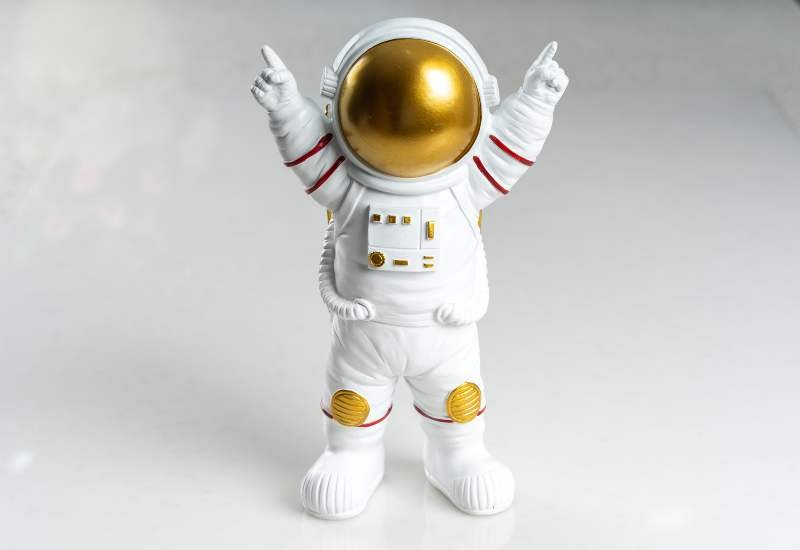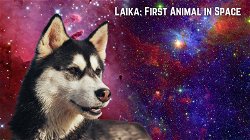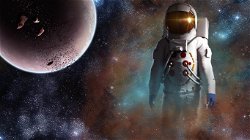Becoming an Astronaut: Requirements, Training, and Duties
Ronit Agarwal
. 4 min read
The term "space sailor" has its origins in the Greek language, and the word "astronaut" comes from there. NASA, which stands for the National Aeronautics and Space Administration, is the department of the United States government in charge of the space program. Astronauts are members of a specialized unit that works for NASA. They are referred to as "space sailors," and this nation dispatches them to various locations in the solar system, including the moon, in order to conduct research and exploration. Astronauts proficient in programming can develop and deploy software systems for data analysis, robotics, and spacecraft operations, enhancing the efficiency and effectiveness of their missions.

What Kind of Qualifications Are Needed to Become an Astronaut?
The requirements for astronauts have been updated to reflect the new goals and missions of NASA. In order to be considered for a position as an astronaut in today's world, applicants need to meet all of the following requirements:
1. Be a U.S. citizen.
2. Have earned a master's degree from an institution that is recognized as having high academic standards in a subject that falls under the umbrella of the STEM (science, technology, engineering, and mathematics) discipline.
3. Possess either at least one thousand hours of experience as a pilot-in-command on jet aircraft or at least two years of relevant professional experience that was obtained after the completion of the degree.
4. Be able to pass the physical examination required of NASA astronauts who will be serving on long-duration missions.
Requirement for a master's degree can also be satisfied by the following
1. Completion of a doctoral program in a relevant area of science, technology, engineering, or mathematics that requires a minimum of two years of study (36 semester hours or 54 quarter hours).
2. Completion of program leading to degree of Doctor of Medicine or Doctor of Osteopathic Medicine.
Candidates for the position of astronaut go through a rigorous training program that lasts between one and two years and is housed at NASA's Johnson Space Center in Houston. Along with mathematics, geology, meteorology, oceanography, astronomy, and physics, they are educated in the systems of the shuttle and the space station, as well as guidance and navigation, orbital dynamics, and materials processing.
Following the selection of an astronaut for a particular mission, that individual and the other members of the crew undergo joint training for a period of several months in order to get ready for the specific tasks that will be required of them during their time in space.
From What Dangers do we need to be Protected by the Spacesuit?
To begin, it has the potential to reverse, at least temporarily, the oxygen deprivation that was discussed at the outset of this discussion. Each spacesuit is equipped with two oxygen tanks and a carbon dioxide removal system, which together allow for a spacewalk duration of between 6.5 and 8.5 hours. Following that, the astronaut is required to make his way back to the space station in order to replenish the depleted oxygen tanks.
The Liquid Cooling and Ventilation Garment (LCVG) is another essential component of the spacesuit. This component includes ventilation tubes for the removal of waste gas as well as clear plastic tubing through which chilled liquid water flows for the purpose of controlling the wearer's body temperature. As a result, the astronaut is able to carry out their duties while maintaining a high level of comfort.
What Exactly is it that an Astronaut does?
1. Astronauts Specializing in Mission Operations
1.1 - Mission Specialist Astronauts assist pilots in the execution of experiments, the launch of satellites, and the maintenance of spacecraft and equipment. It's possible that they have a background in engineering, science, or even medicine.
1.2 - They are also capable of working as astronaut educators, with the goal of motivating students to think about participating in the US space program.
2. Pilot Astronauts
Pilot Astronauts are responsible for flying the space shuttle and serving as commanders on the International Space Station. They are accountable for the flight's crew, the mission, the accomplishment of the mission, as well as the safety of the flight. The astronauts at the Johnson Space Center are prepared for their work in space by using a variety of simulators and facilities.
3. Work
Experiments, extravehicular activities, and maintenance of the International Space Station are the three main components that make up an astronaut's workday. In preparation for their experiments, they conduct research in a wide variety of disciplines, including biology and biotechnology, two of my personal favorites.
1. Aside from the ultimate goal of research and scientific purpose that they have been officially sent to do, an astronaut has a variety of roles that they fulfill while they are in space.
2. A person's level of responsibility increases in direct proportion to the amount of experience they have.
3. In their capacity as astronauts, they contribute to the protection of the spacecraft and the other members of the crew.
4. They perform a variety of duties as crew members aboard the spacecraft, ranging from the role of mission specialist to that of commander.
Conclusion
In conclusion, becoming an astronaut is a highly competitive and challenging process that requires a candidate to possess a master's degree in a STEM-related field, extensive professional experience, and excellent physical fitness. Once selected, astronauts undergo rigorous training at NASA's Johnson Space Center to learn about various systems, guidance, navigation, and materials processing, among other topics. Ultimately, astronauts play a vital role in advancing scientific knowledge, exploring new frontiers, and contributing to the safety and success of the US space program.
More Stories from
Laika: The First Animal in Space
This article discusses the story of Laika, the first animal to orbit Earth, as well as the Soviet Union's canine astronaut program.
Space Weapons: Concerns and Global Stances
This article discusses the concept of space weapons and the reasons why they are developed, as well as the concerns surrounding their deployment.
Exploring the Final Frontier: A Glimpse into the World of Space Research
From probing distant galaxies with space telescopes to charting the potential for human life on other planets, this article provides a glimpse into the evolving field of space research.
Connected Cosmos: Embracing the Future of Space Exploration with Video Chat
Discover the potential for human colonization of other planets, breakthrough propulsion systems, and the expansion of our knowledge of the universe through space-based astronomy.
Chandrayaan-3: India's Ambitious Lunar Mission for Scientific Exploration
Chandrayaan-3, India's third lunar mission led by ISRO, aims to overcome past challenges and demonstrate soft landing capabilities on the Moon.








.png?width=40&aspect_ratio=1:1)


